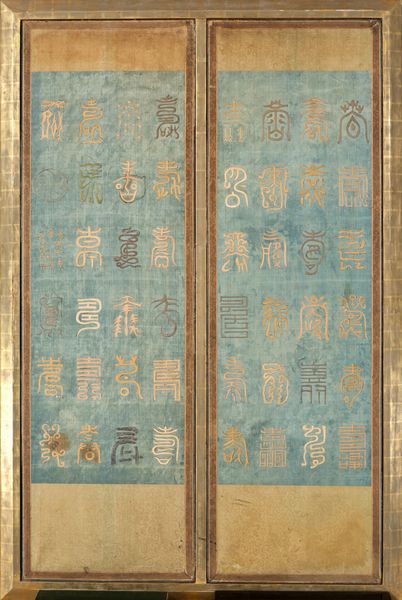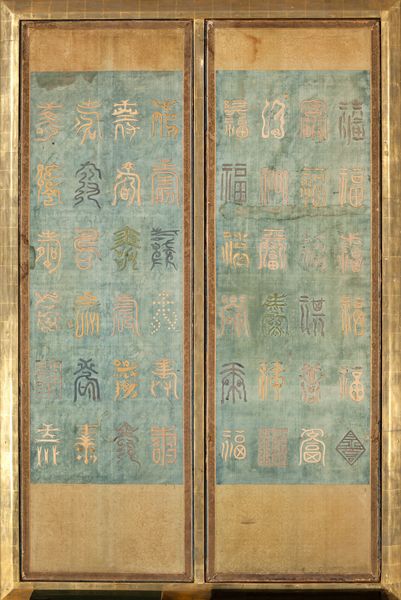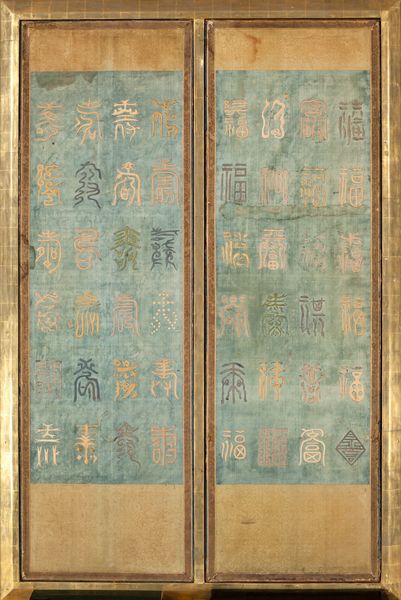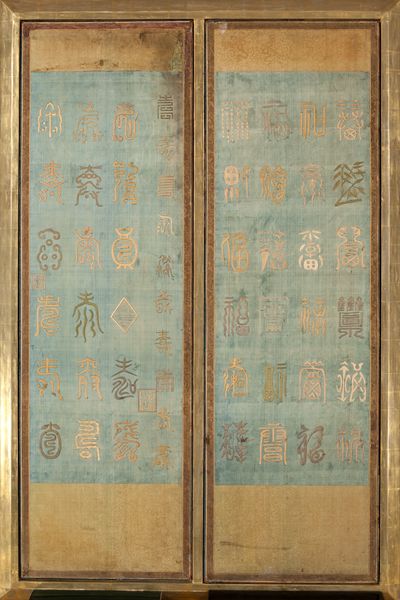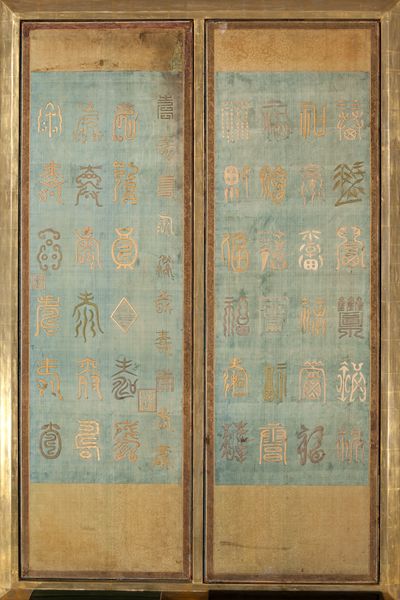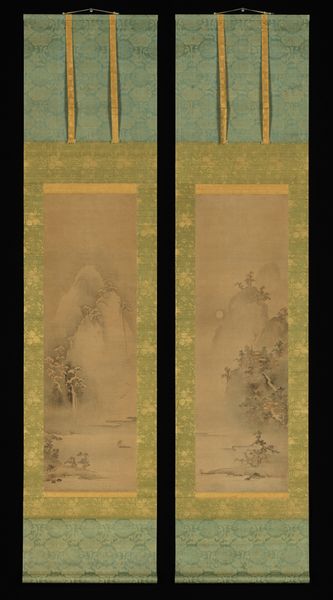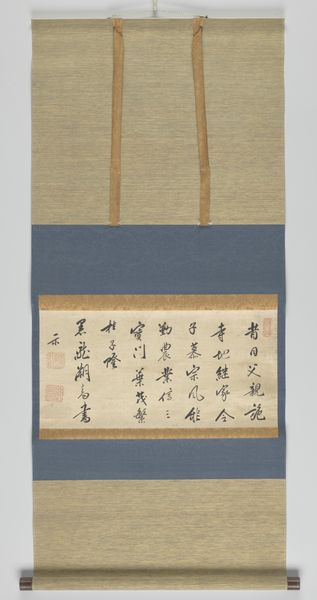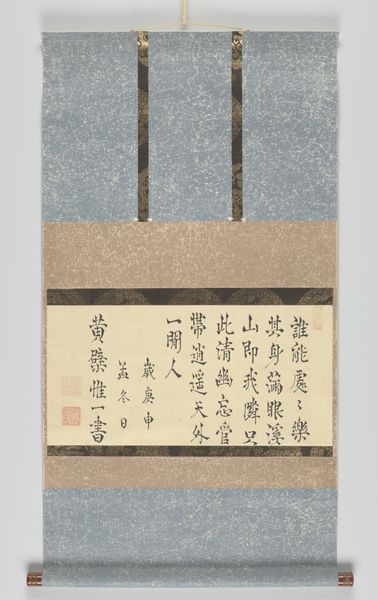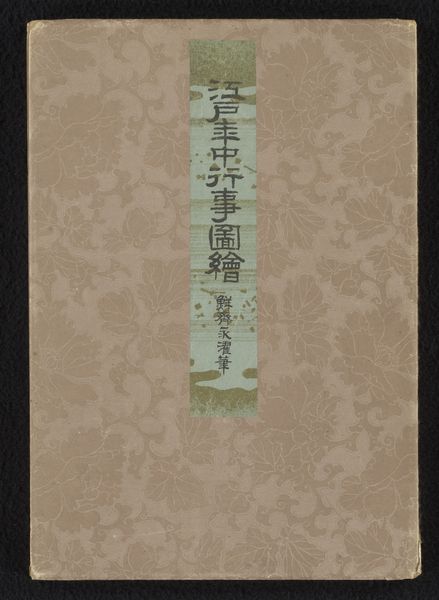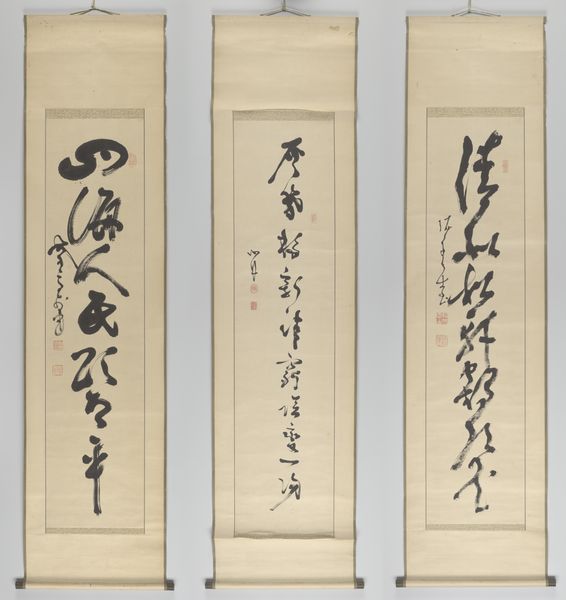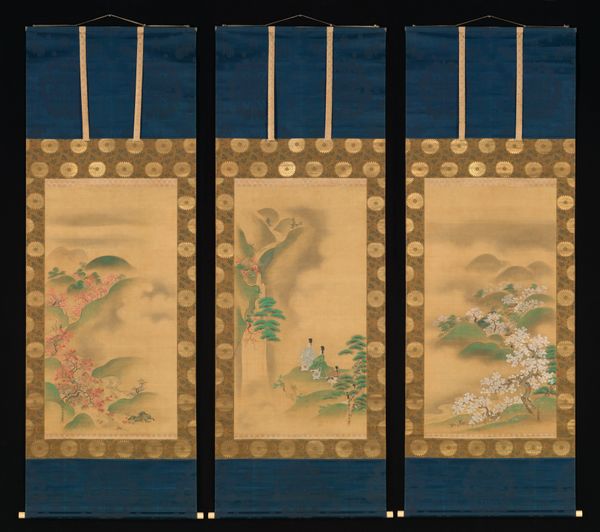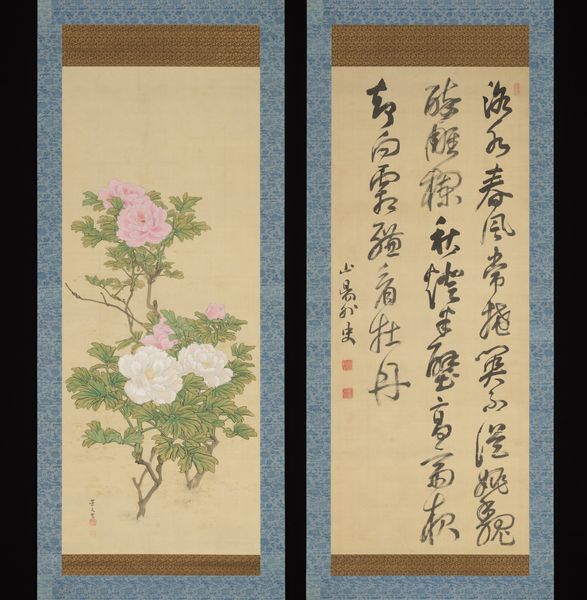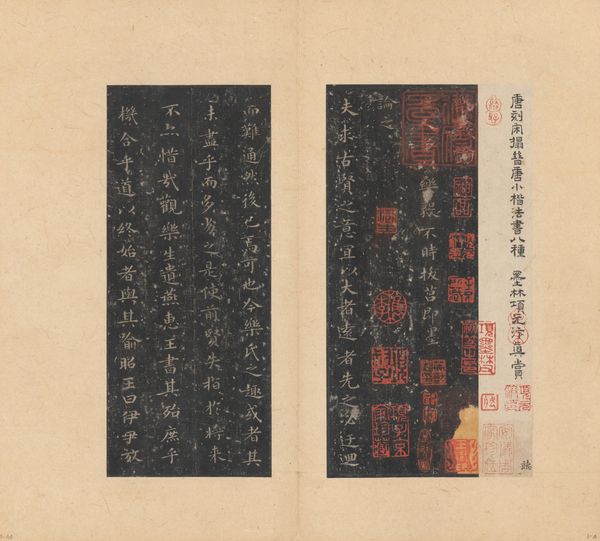
Embroidered Panels with Design of the Chinese Characters for “Longevity” and “Good Fortune” 18th-19th century
0:00
0:00
panel, textile
#
panel
#
asian-art
#
textile
#
decorative-art
#
calligraphy
Dimensions: 34 1/8 × 12 5/8 in. (86.68 × 32.07 cm) (image)46 3/8 × 14 3/8 in. (117.79 × 36.51 cm) (mount)50 1/4 × 33 5/8 × 1 1/16 in. (127.64 × 85.41 × 2.7 cm) (outer frame)
Copyright: Public Domain
These embroidered panels, now at the Minneapolis Institute of Art, present the Chinese characters for "longevity" and "good fortune" through silk threads meticulously stitched onto a fabric ground. The creation of such panels speaks volumes about the cultural values placed on longevity and prosperity. But let's look closer at the embroidery itself. The choice of silk, its sheen and smoothness, enhances the symbolic weight of the characters. Each stitch is a testament to focused labor, requiring steady hands and keen eyesight. Consider the countless hours needed to complete these panels – labor often performed by women, reflecting gendered divisions of work. Embroidery, often seen as a "minor" art, gains new significance when viewed through this lens. It transforms everyday material into potent symbols of cultural aspiration. These panels beautifully blur the line between craft and art, reminding us that skill and meaning are woven into the very fabric of our lives.
Comments
minneapolisinstituteofart almost 2 years ago
⋮
Each of these six panels features twenty-four Chinese characters, alternating between the characters for “longevity” (壽) and “good fortune” (福). The characters, embroidered in gold thread on a light-blue ground, represent a wide variety of scripts. Some are traditional, while others are less orthodox, including characters whose brushstrokes are formed by stylized bamboo, fish, or birds. These panels—probably from a set of eight or ten panels mounted individually or as a folding screen—would have been used as an auspicious backdrop for a sixtieth birthday celebration. The sixtieth year (called hwangap in Korean), marking one’s survival through a full sexagenary cycle (the twelve-pronged, sixty-year zodiac calendar), receives special commemoration in many cultures within the Chinese cultural sphere, even today.
Join the conversation
Join millions of artists and users on Artera today and experience the ultimate creative platform.
